An early social worker
Harriett M. Bartlett (1897-1987)
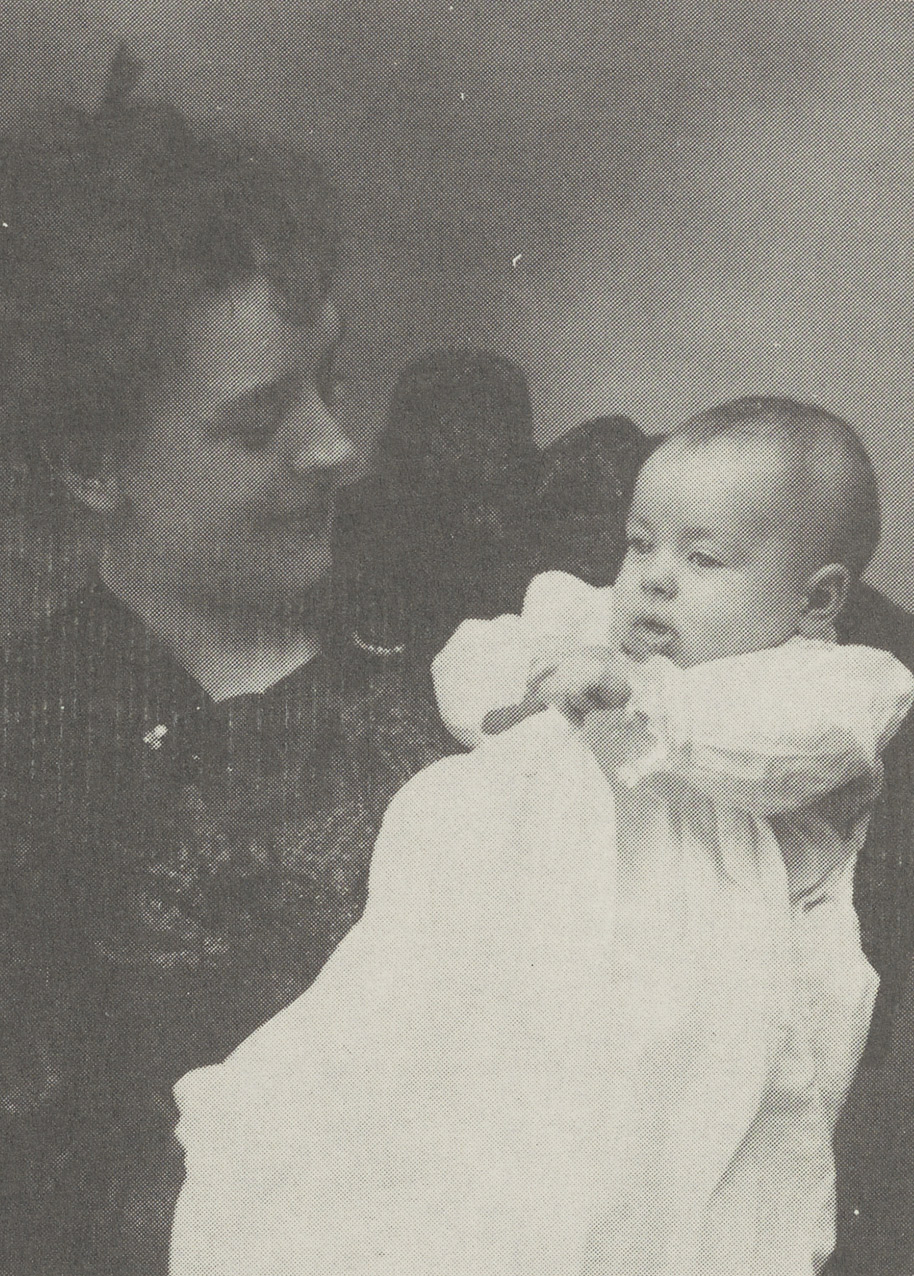
In 1908 aboard a steamer headed for England, a Boston doctor walked the deck. To pass the time, he played a game in his head, asking himself which of his fellow passengers he most wanted to meet. Stopping in front of a couple and their 11-year-old daughter, he said: “You are the people I would most like to know on this boat.”
So it was that Dr. Richard C. Cabot, noted physician, professor at the Harvard Medical School, and member of one of Boston’s famous first families, met Henry and Alice Bartlett and their daughter, Harriett. The friendship was to last a lifetime, as Harriett told her oral biographer in a 1978 interview for the National Association of Social Workers, and would, in a few years, place Harriett center stage in the new field of medical social work introduced by Dr. Cabot at Massachusetts General Hospital in Boston.
Harriett Moulton Bartlett was born July 18, 1897, in Lowell, Massachusetts. Among her ancestors were a signer of the Declaration of Independence, Josiah Bartlett; a signer of the Constitution and president of the Continental Congress, Nathaniel Gorham; and a noted 19th-century teacher and physician, Dr. Elisha Bartlett.
Harriett’s mother, Alice, was the daughter of Oliver Moulton, a mill superintendent in Lowell, Massachusetts, a town famous for textile mills. Her father, Henry, was the son of Charles Edward Adams Bartlett, president of the Boston & Lowell Railroad. After graduating from Harvard with a degree in mechanical engineering, Henry followed his father into railroading and eventually became head of rolling stock at this small, well-run railroad known for its superior locomotives. During World War I, Henry sat on a committee to standardize locomotives throughout the United States.
Early Years
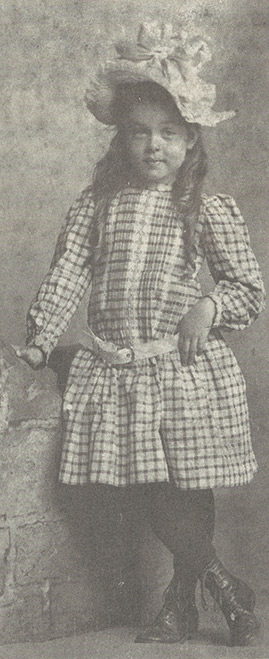
Harriett spent her first 10 years in the third story of her grandfather’s comfortable house with her parents and brother, Moulton.
This pleasant decade came to an abrupt end in 1907 with a tragedy that affected Harriett for the rest of her life. Her brother, who was then 13, died of pneumonia while at camp in Maine. His death, Harriett recalled later, “brought my parents and me closer together.” Except for short periods, Harriett, who never married, lived with her parents until their deaths.
A month after Moulton’s death, Grandfather Moulton died and the Bartletts left Lowell for Cambridge, Massachusetts. To take their mind off recent sadness, Alice Bartlett decided they should all go to Europe with her sister’s family. “It was my first grand tour— very Victorian— in one of those slow steamers,” Harriett recalled.
It was on this trip that the Bartletts met Dr. Cabot—or rather Dr. Cabot met Alice Bartlett. After the voyage, Harriet remembers, “Mother, who was a sparkling person, took to corresponding with Dr. Cabot. They both wrote charming letters. Mother couldn’t spell and he was a perfectionist, and they always had great fun over that.”
On returning to Cambridge, Harriett, who was growing rapidly and would soon reach 6-foot-1, entered the fifth grade at the Buckingham School—now Buckingham, Browne & Nichols School. Here she discovered she was an intellectual.

“This was quite a change and an exciting experience for me,” Harriett recalled. “I suddenly found myself in class with the daughters of Harvard professors. Henry Wadsworth Longfellow’s granddaughter was in my class. Another girl, Grace Richards, was the daughter of a Nobel Prize winner in chemistry. Grace married a leading chemist, James Bryant Conant, who was president of Harvard from 1933 to 1953.
“Coming from a mill city, I was somewhat overawed at first. I wondered if I could keep up with such an illustrious group. But I was accepted readily by my classmates,” she said. Buckingham ended at the ninth grade, but the members of Harriett’s class remained close. For many years, eight of these bright young women, calling themselves a “club,” would meet every two weeks throughout the winter months. A member who had been away would immediately announce that she was back in Cambridge, and a special meeting would be called.
After Buckingham, Harriett prepared for college at the May School in Boston—now the Brimmer and May School. She entered Vassar in 1914 and graduated Phi Beta Kappa in 1918.
Career Beginnings
Her college years spanned World War I, and, like many young women in those days, she wanted to help the war effort. In the last year of college, she took a Red Cross Home Service Course, which, she told her oral historian, would turn out to “point to choice of career”: social work.
To receive a certificate from the Association of Charities, she was required to do fieldwork. She arranged to do so in Cambridge the summer after she graduated.
“I remember very vividly those first home visits. And particularly one with an Italian family. I was trying earnestly to follow the instructions for an interview when the lady and her neighbors were all talking loudly.… And I felt I wasn’t getting very far. But I did carry with me the impression of a different cultural group that stayed right by me. It was as if the experience said: ‘Volunteer.’ ”
And volunteer Harriett did, but not before she spent a year in England with her parents. Her father worked in the office of one of the railroad men he had known back home. And Harriett studied at the London School of Economics and received a Social Science Certificate in 1920.
When the family returned to Cambridge, Harriett learned from her mother, who still corresponded with Dr. Cabot, that “Dr. Cabot was doing interesting things at Mass General.” As director of the outpatient clinic, Dr. Cabot noted that certain patients returned again and again for treatment. He began to wonder how much their environment was responsible for their ill health. He invited Ida Cannon, a public health nurse, to head up the Social Work Department to see if, together, they could come up with a better program to help the patients.
As early as 1903, concerned citizens were aware that social problems often stood in the way of a patient’s recovery, but Dr. Cabot and Ida Cannon were among the first to attack the problem using a team approach, with doctors, nurses, and social workers each playing a part.
Work at Mass General
Harriett went to see Dr. Cabot, who sent her to Ida Cannon. As Harriett recalled, Ida Cannon “did just what Dr. Cabot had done with her. She said, ‘Why don’t you come and volunteer with us?’ And that’s how I came to the famous corner with the white curtains in Mass General where Dr. Cabot placed his first social workers.
“I began work with two of my friends, Theodate Soule and Ruth Lewis, who had been there ahead of me. We used to lift up the curtains when our supervisor was busy and say to the nearest one, ‘Hey, what would you do about this?’ if we needed a little advice.
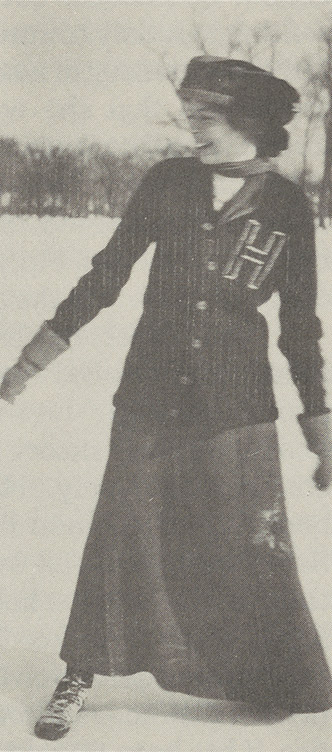
“I remember sitting there while a patient would be weeping and disturbed, and gradually as I listened I would see some confidence coming back. I learned that there was something about being with a person and listening that was supportive . . . and I began to feel what social work, even with its limited training then, could offer.”
Although Mass General’s wasn’t the first medical social work department, it steadily and clearly became a model for the world. The brilliant, somewhat dominating Dr. Cabot insisted all work be evaluated. What worked? What didn’t? Ida Cannon was patient and steady. They were friends and had a wide group of family connections. They knew people and doctors in different major hospitals around the world. Ida knew the social workers in London. Dr. Cabot knew the doctors in Paris. Both met with U.S. social service departments as they developed around the country. Dr. Cabot often supported the work with personal funds, something Harriett would do later.
Harriett was employed in the social service department of Mass General as caseworker, supervisor and educational consultant for more than 20 years (1921-42).
Contributions to Medical Social Work
In the whirlwind of activity at Mass General, Harriett noted that social workers learned mostly by doing, since almost no books taught this new profession. This fact concerned Harriett, who was well organized and delighted in conceptualizing.
She continued to seek more training and knowledge. In 1927, she received a master’s degree in sociology from the University of Chicago.
Having recently joined the American Association of Medical Social Workers, she began writing to satisfy committee work requirements, but she soon sought more writing opportunities. She found she wanted to give scholarly attention and order to the scattered field of social work practice. “We need our own body of knowledge to stand on to be more effective,” Harriett said. She wanted to change the art of social work into the science of social work.
Thus, Harriett Bartlett helped transform social work into a profession primarily through her interest in developing knowledge and theory about what social workers do. Ultimately, she wrote six books, 40 articles and one monograph on the practice of medical social work. Her most important contribution was her book “The Common Base of Social Work Practice.” This classic text furthers the working definition of social work and identifies the distinctive elements of social work practice. It has been translated into many languages.
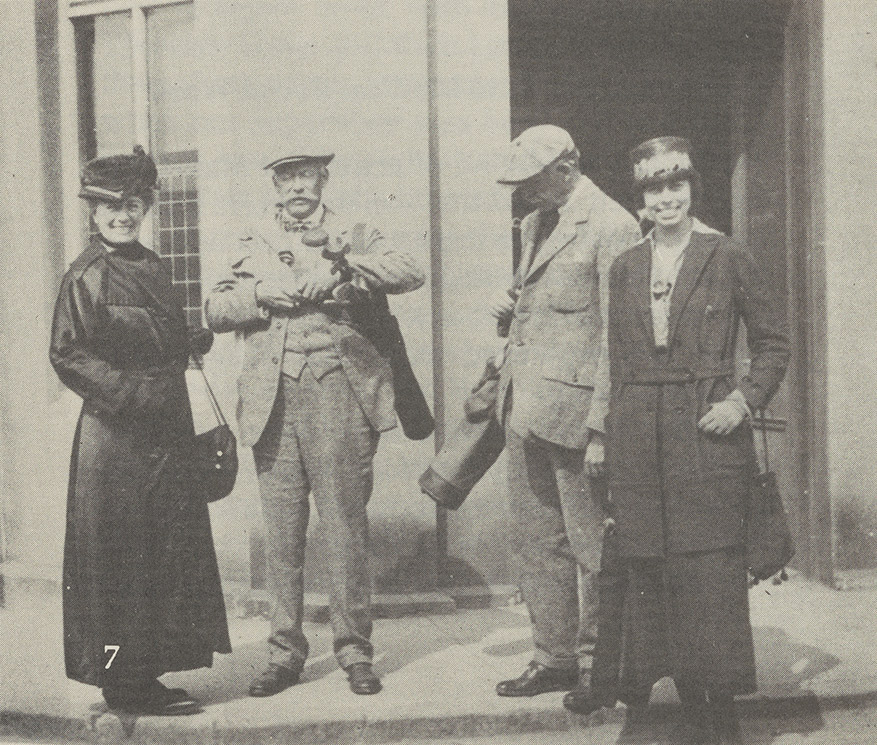
In 1947, Harriett took an apartment near her aging parents in a building overlooking the Charles River in Cambridge. Almost as soon as she arrived, the dean of Simmons College in Boston called her in and asked her to recommend someone to teach at the School of Social Work.
“I started to recommend names, and then the dean said would I come myself. I had been wondering what to do because, by this time, my parents had become quite elderly, and I thought it would be better if I were nearby,” Harriett recalled. “And I thought maybe I might take on this teaching.”
Harriett started at Simmons as an associate professor, and later became director of medical social work. She retired in 1957 to pursue a program of writing, study, and research. In 1981, in keeping with her lifelong commitment to practice and research, she funded the Harriett M. Bartlett Practice Effectiveness Project under the auspices of the National Association of Social Workers (NASW). An objective of the project was to establish a national clearinghouse for case studies in social work practice.
Harriett’s work earned her many professional awards, including two honorary degrees: Doctor of Humane Letters from Boston University in 1969 and Doctor of Social Science from Simmons College in 1976. The NASW board of directors presented her with an award “in recognition of her many years of devotion and service in helping to shape the destiny of the social work profession, her dedication to the National Association of Social Workers, and especially for her extraordinary efforts in the clarification of social work practice.”
An Avid Naturalist and Reader
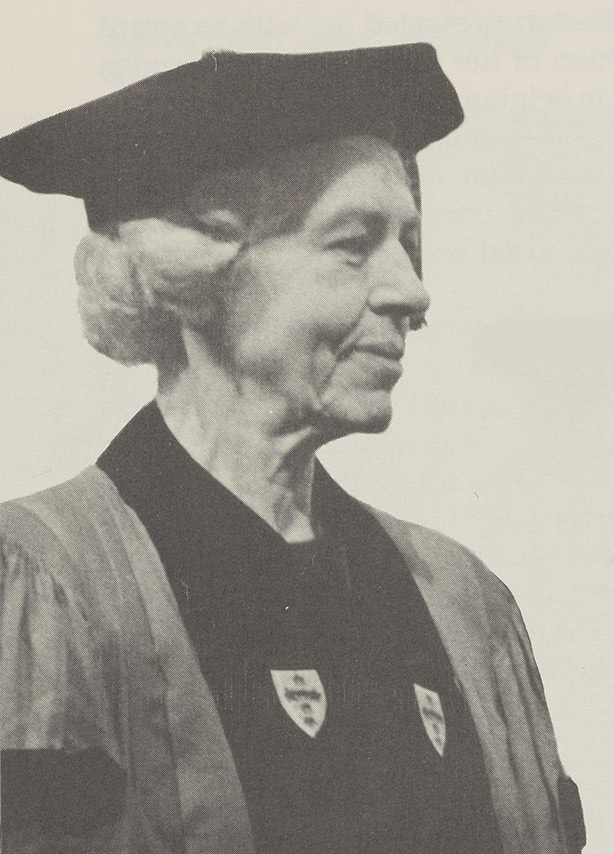
Although medical social work was Harriett’s passion, she retreated for a month each year to her summer home at Mirror Lake in New Hampshire. She had summered in the area almost every year since college, and in the 1940s bought a place of her own. She loved the woods, the water, the birds—and books.
Throughout the year, she would read the New York Times Book Review section, clipping reviews of books that interested her. She’d order 30 or more and have them sent to her summer cottage. Some books were technical, some were about nature, and the rest were about English country houses and the people who lived in them in the 19th century, a period she loved. She’d read several books at once, and she had places outdoors where she’d read at particular times of the day. She even designated what type of book she’d read at various spots.
Harriett also was an avid walker. Until she was in her early 80s, her tall, majestic carriage was eye-catching as she strode the streets of Cambridge. When she was younger and her parents were still alive, the three of them would often go for moonlight walks around Cambridge. Once they even walked the four miles from Cambridge to a wedding in Brookline, surprising the guests, according to Harriett.
The older she got, the more Harriett resembled Eleanor Roosevelt, a case of mistaken identity that secretly pleased her.
How Harriett felt about her life can best be summed up in a note she wrote to her cousins in 1947 to be delivered by her lawyer in the event of her death:
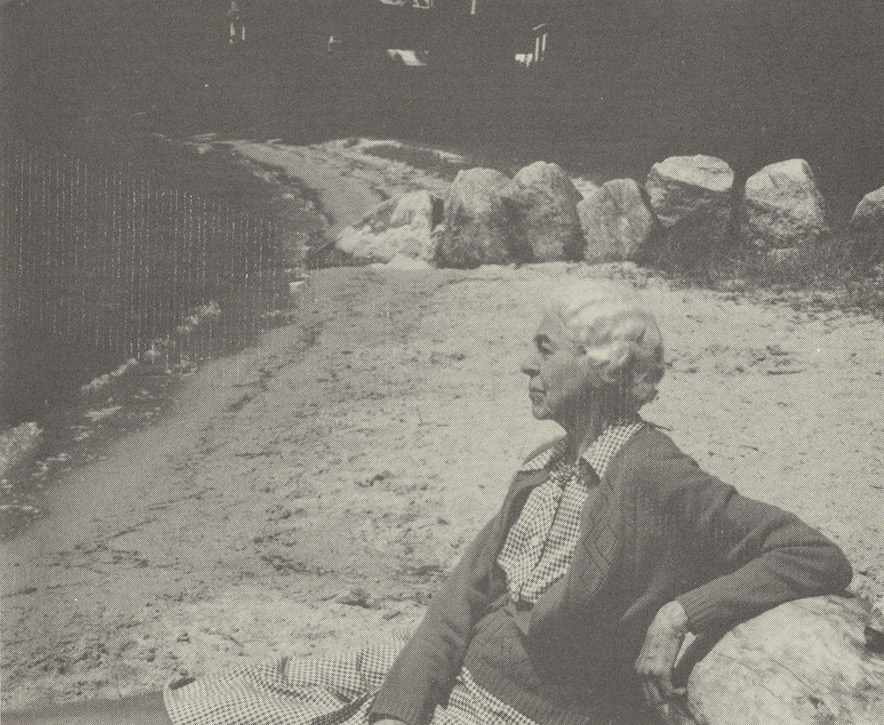
If anything should happen on any of my travels to snatch me suddenly out of this life, I want to say that I feel that I have had a good life. I’ve been blessed with interesting experiences in work and in play and the warm affection of family and friends. I believe that I’ve been able to contribute a little something worthwhile to social effort in my time, and it has been worthwhile for me, too. I am not afraid to go, and I hope that those who love me will rejoice over all the happiness that we have had together and not grieve over the lost. With all my love, Harriett
Harriett M. Bartlett died in 1987 at age 89, but her contributions to social work continue. She left a fund and a plan. “It is my dream that the profession of social work sometime will reach a point of maturity when it will be interested and able to establish a center for advanced study at some university to develop social work knowledge and theory to improve social work education and practice.”
In her will, she established the Harriett M. Bartlett Fund in The New York Community Trust. It is a field-of-interest fund dedicated that supports projects to strengthen the ability of the social work profession to address social causes.